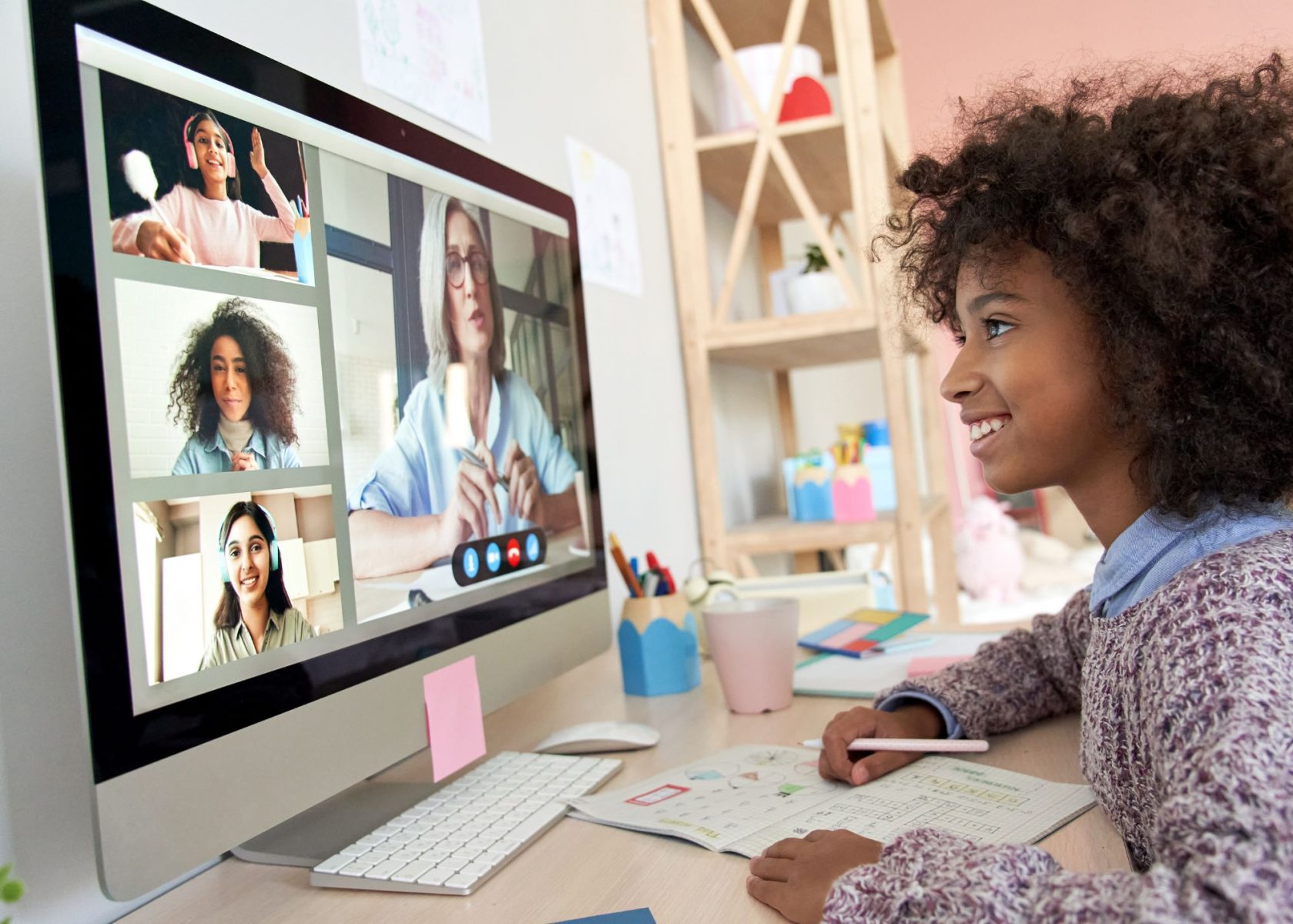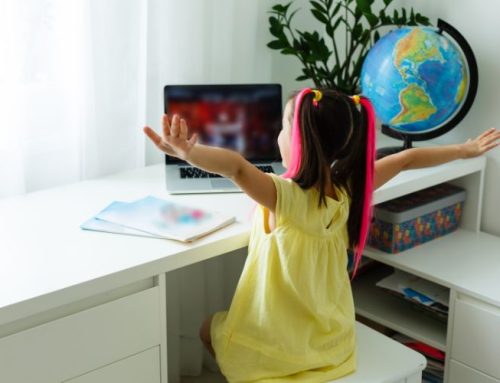In 2021, when SelfDesign Education Assistant Meghan mentioned to colleague Talisha that she thought she had been the only person who had applied for the position in 2020, Talisha set her straight.
“No. No, you weren’t,” Talisha said. “I know, because I applied for it, too.”
Meghan, who commenced from SelfDesign as a learner in 2017, came into the role first, with Talisha following the next year. Together, their main role on the Education Program team, says team lead Janice Green, “is to support the support providers who are contracted to provide specific, often specialized, services to our learners and families.”
When the Education Program team surveyed these support providers in 2020–2021, the results indicated that these members of SelfDesign’s community “oftentimes felt as though they were working in isolation and that they craved community.”
As a result, SelfDesign created a new position to support these external contractors. The primary role of the Education Program education assistants, Janice says, is “to build community for SelfDesign’s approximately 2,500 support providers across the province. They also help the Education Program team support learners and educators, as needed, during real-time meetings and live offerings and with some administration.”
Supporting support providers
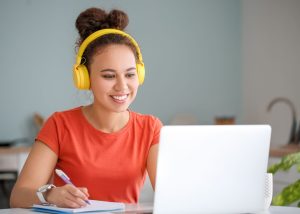 Every year, our learners work with a variety of external service providers–contractors who are contracted with SelfDesign through learners’ individual education plans.
Every year, our learners work with a variety of external service providers–contractors who are contracted with SelfDesign through learners’ individual education plans.
Online and in-person, in communities across B.C., some of these specialist contractors provide support such as language, speech and behavioural therapy or counselling services to learners with learning challenges.
Other support providers tutor learners who want or need extra help in math, science, reading, French or other learning areas. “
Many also support and help learners refine their executive functioning skills, organization and time management, which become especially necessary when a learner reaches grades 10 to 12,” Janice says.
“All the support providers are independently contracted,” Meghan says, “and they didn’t really have any connection into SelfDesign aside from their learner and the learning consultant. So there was this big need for connection and for someone to help them out.”
Meghan, with Talisha’s support, compiles and designs a monthly newsletter for this large community of contractors. She describes The SP News as a hub for different kinds of information for SelfDesign’s support providers.
“The newsletter describes everything going on in SelfDesign and in the program,” Meghan says. “We include important dates, address any questions that might come up, and share relevant information. We also publish opportunities for the support providers to get more work.”
A learning consultant could be looking for a math tutor, someone to provide one-on-one French conversation, or an occupational therapist in a specific community in B.C. for one of their learners.
“It’s really satisfying being able to connect those educators and learners with the support they’re looking for,” Meghan says.“Our support providers live and work in communities across B.C., and oftentimes, they work directly with the learner and family,” Janice says. “It can sometimes lead to them feeling a bit isolated, and we wanted to make sure they feel like they’re part of the SelfDesign community. The newsletter and the contact Meghan and Talisha provide help that part of our community connect with what’s going on.”
In addition, Meghan and Talisha help support providers with specific tasks, including the recent transition to the Brightspace learning management system, which took place at the start of the 2022–2023 learning year. Meghan and Talisha were online daily, answering support providers’ questions about how to navigate the new platform.
Those responsibilities remain at the core of their work, but as the role has developed over the last few years, the two education assistants have taken on more and more varied responsibilities.
Supporting real-time meetings and live offerings
“Meghan and I get to dip our toes in a lot of different areas of SelfDesign,” Talisha says. “We facilitate Open Spaces and support real-time meetings and live offerings — that’s how many learners and educators come to know our faces.”
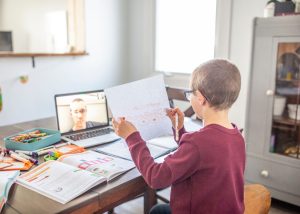 Piloted in early 2021 for learners in grades 10 to 12, the informal, learner-led online meeting spaces called Open Spaces expanded in 2022–2023 to include a weekly offering for SelfDesign learners in grades 8 to 12 and a separate weekly Open Spaces for learners in grades 4 to 7.
Piloted in early 2021 for learners in grades 10 to 12, the informal, learner-led online meeting spaces called Open Spaces expanded in 2022–2023 to include a weekly offering for SelfDesign learners in grades 8 to 12 and a separate weekly Open Spaces for learners in grades 4 to 7.
Meghan and Talisha also support the optional 6–7 Theme and 8–9 Theme offerings. At these real-time meetings, learners in grades six and seven and in eight and nine are invited to gather online and get to know one another. As they explore new activities together, they become more familiar with the online tools SelfDesign uses.
Talisha also supports the learning specialist who leads the new Math add-on course for learners in grades 8 and 9. And when a learning specialist working with learners in grades 10 to 12 needs support during their live offerings, Meghan or Talisha will step in to help out.
In spring 2023, Talisha also supported Crafty Fridays, a weekly option for learners and their families to learn about and explore together traditional and contemporary Indigenous crafts such as beading, embroidery, moccasin making and medicine pouch creation.
“I really like following the learners through the years,” Meghan says. “I often meet learners for the first time when I support the 6–7 Theme offering, and then I can watch them learn and grow from year to year right into grade 10 and beyond. It’s great to see that.”
Supporting review and preparation of educational resources
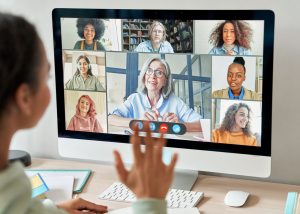 When they’re not working directly with learners, educators and support providers, Meghan and Talisha work with SelfDesign’s Administration Support team to further SelfDesign’s commitment to Universal Design for Learning, a way of thinking about education and learning that gives every learner an equal opportunity to succeed. Drawing on insights from neuroscience and leading-edge practices in educational design and implementation, Universal Design for Learning advocates the use of a variety of teaching methods, modes and tools, with adjustments made for individual learner’s strengths, interests and needs.
When they’re not working directly with learners, educators and support providers, Meghan and Talisha work with SelfDesign’s Administration Support team to further SelfDesign’s commitment to Universal Design for Learning, a way of thinking about education and learning that gives every learner an equal opportunity to succeed. Drawing on insights from neuroscience and leading-edge practices in educational design and implementation, Universal Design for Learning advocates the use of a variety of teaching methods, modes and tools, with adjustments made for individual learner’s strengths, interests and needs.
As part of this, Meghan and Talisha spend time every week transcribing audio into text and recording information into audio to make those resources more accessible to learners and contractors.
“Basically, every YouTube video that SelfDesign uses in its offerings — we eventually will create a text-based transcription and bullet-point summary of it,” Talisha says. “The same goes for any print or text article that SelfDesign uses — we will eventually be making an audio recording of it.”
She and Meghan also help with the Learning Experiences Library, as needed. They assist our librarian in checking links, reviewing images, and flagging any library learning resources that need to be updated or reviewed further.
Potential and variety
In addition, Janice says, “Meghan and Talisha actively seek out professional opportunities to help them grow and stay current in their work. Professional development is not reserved for educators, but it’s absolutely necessary for members of the Education Program team to help us stay true to our commitment to provide innovative, cutting-edge and important educational opportunities and support for our learners and families.”
The growth and constant variety in their role keeps the two education assistants engaged, busy and interested.
“Meghan and I were just talking about this the other day,” Talisha says. “It’s really nice that our roles shift a lot here, that we can work different roles throughout the week, connect with the learners, and have that flexibility and variety.”
“We’re always working on so many different things,” says Meghan.
Read more about the work support providers do at SelfDesign
Read about the roles of learning consultants and other educators at SelfDesign
Learn about the roles of the SelfDesign learner and of their parents and guardians

